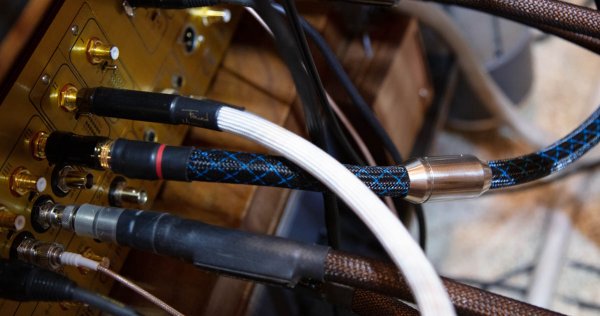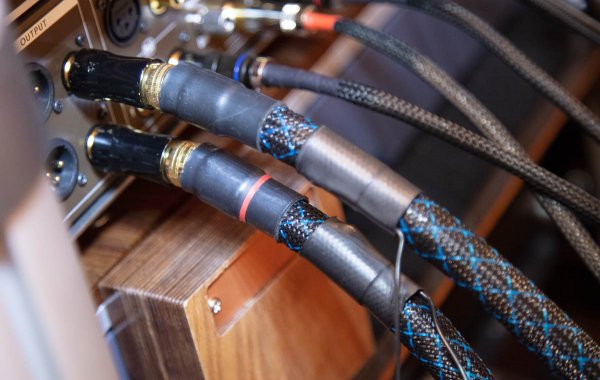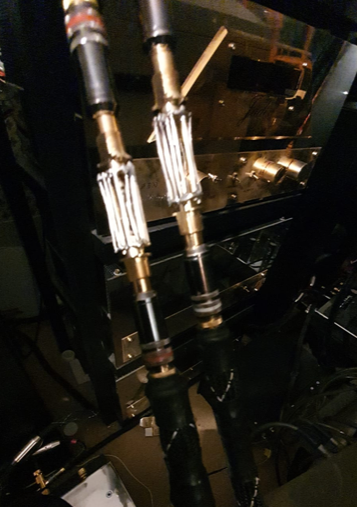for the last 10 years of my high end audiophile time, i've mostly steered clear of the very top price level of signal cables. i did own some very 'uber' priced Tara Labs interconnects for a couple years chasing digital goodness with my Trinity dac and Golden Gate. impressive with their grounding boxes and such. they have been gone 3 years now. 18 years ago i owned $33k Transparent Audio Opus MM speaker cables, for a year i owned 2 sets ($66k worth ) of them. sold my last set about 10 years ago. with darTZeel (50 ohm zeel) and Evolution (used the wire used in the speakers) i just did not really see the need for that.
) of them. sold my last set about 10 years ago. with darTZeel (50 ohm zeel) and Evolution (used the wire used in the speakers) i just did not really see the need for that.
lately i've been stepping up my vinyl playback and been speaking to Mik in the UK about some super special phono cables, the LFD, made by Dr. Richard Bews. after much discussion (over almost 9 months now) and some of my own research (there is little to be found about LFD......mostly word of mouth), i committed to having a DIN to RCA phono cable made for me. i've done the CS Port Phono, which has been 100%+ of Mik's representations, the CS Port Phono the same, the Etsuro Gold too.
this LFD "Kotonaru Arm" DIN to RCA cable (and a similar LFD set of "Raptor Mk2" RCA interconnects) finally arrived last week.
first listen in the system was positive on Friday night, but not earthshaking. it was a step up over a very good Found Music DIN to RCA i was using, but more body and textures. then Saturday morning it got a bit cloudy and i was concerned. went to work on Saturday, Mik had called me but i had not responded to him. Saturday night i put the Found Music cable back in and it seemed more open and 'familiar'. put the LFD back in and again, a bit opaque.
then Sunday morning Jazdoc came over and we had a plan to compare the cables objectively. started out with the LFD, then switched to the Found Music. at that point we thought something was missing from the LFD and the Found Music was better. we also listened to the LFD RCA interconnects between the CS Port and the dart pre and compared them to the Found Music RCA interconnects i had been using. we thought those were very close to even. just differences.
so we did another round of comparisons. now.......there was a significant 180 degree change. now the LFD phono was showing all this additional information. the more we played it the more all this texture and color (not coloration) came into play. and it was very much something revealed in the music and no artifact. the music was more real.
that was Sunday around 2pm. i listened the rest of the day, and every morning and night since. it gets better and better. i've heard 'mega' cables in systems at shows, and owned a few as i mentioned. i've not personally heard this sort of musical reality completing the reproduction picture. i own a number of vintage classical pressings that have always been just a little edgy or maybe borderline harsh. i like the music but never warmed up to them. the LFD cable translates that harshness to musical information and brings these alive. it's remarkable. there is now an expressiveness and textural completeness like reality. this is not vividness turned up to 11, or air, air, air and openness to the sky. it's not FR related. this is not a tonal coloration or issue of soundstage or bass articulation, although all those things are top level. this is texture and substance. stuff in the recording but not previously heard. a different level of musically significant information.
this cable had 3-4 hours on it when i got it. now it has maybe 20-25 hours. so there is a ways to go. maybe there still will be some down spots. but right now as i sit here this cable is bringing as much to the party in terms of musical value as any other piece of the chain...it's a component
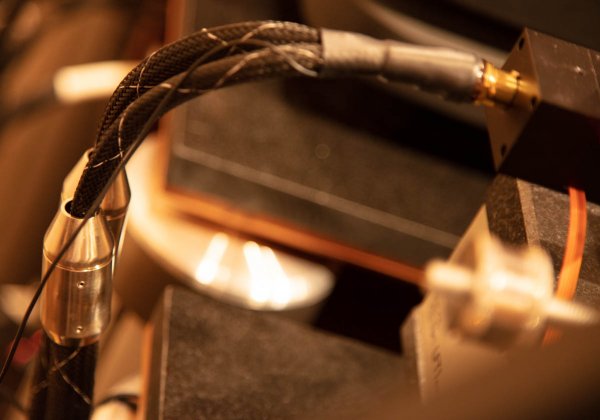
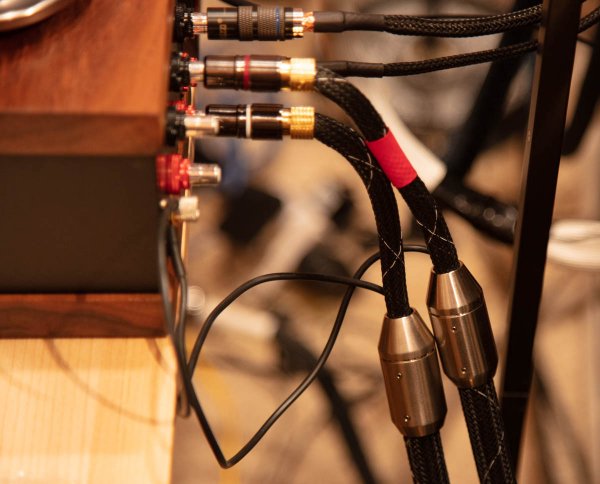
lately i've been stepping up my vinyl playback and been speaking to Mik in the UK about some super special phono cables, the LFD, made by Dr. Richard Bews. after much discussion (over almost 9 months now) and some of my own research (there is little to be found about LFD......mostly word of mouth), i committed to having a DIN to RCA phono cable made for me. i've done the CS Port Phono, which has been 100%+ of Mik's representations, the CS Port Phono the same, the Etsuro Gold too.
this LFD "Kotonaru Arm" DIN to RCA cable (and a similar LFD set of "Raptor Mk2" RCA interconnects) finally arrived last week.
first listen in the system was positive on Friday night, but not earthshaking. it was a step up over a very good Found Music DIN to RCA i was using, but more body and textures. then Saturday morning it got a bit cloudy and i was concerned. went to work on Saturday, Mik had called me but i had not responded to him. Saturday night i put the Found Music cable back in and it seemed more open and 'familiar'. put the LFD back in and again, a bit opaque.
then Sunday morning Jazdoc came over and we had a plan to compare the cables objectively. started out with the LFD, then switched to the Found Music. at that point we thought something was missing from the LFD and the Found Music was better. we also listened to the LFD RCA interconnects between the CS Port and the dart pre and compared them to the Found Music RCA interconnects i had been using. we thought those were very close to even. just differences.
so we did another round of comparisons. now.......there was a significant 180 degree change. now the LFD phono was showing all this additional information. the more we played it the more all this texture and color (not coloration) came into play. and it was very much something revealed in the music and no artifact. the music was more real.
that was Sunday around 2pm. i listened the rest of the day, and every morning and night since. it gets better and better. i've heard 'mega' cables in systems at shows, and owned a few as i mentioned. i've not personally heard this sort of musical reality completing the reproduction picture. i own a number of vintage classical pressings that have always been just a little edgy or maybe borderline harsh. i like the music but never warmed up to them. the LFD cable translates that harshness to musical information and brings these alive. it's remarkable. there is now an expressiveness and textural completeness like reality. this is not vividness turned up to 11, or air, air, air and openness to the sky. it's not FR related. this is not a tonal coloration or issue of soundstage or bass articulation, although all those things are top level. this is texture and substance. stuff in the recording but not previously heard. a different level of musically significant information.
this cable had 3-4 hours on it when i got it. now it has maybe 20-25 hours. so there is a ways to go. maybe there still will be some down spots. but right now as i sit here this cable is bringing as much to the party in terms of musical value as any other piece of the chain...it's a component


Last edited:













